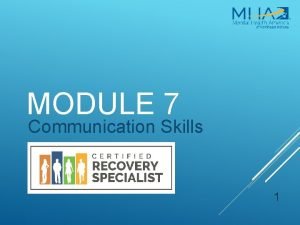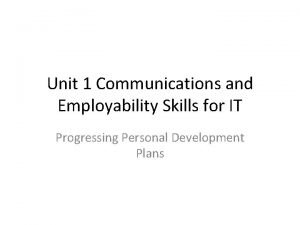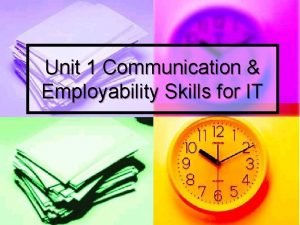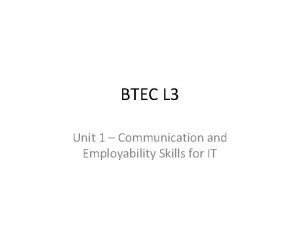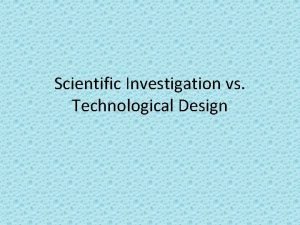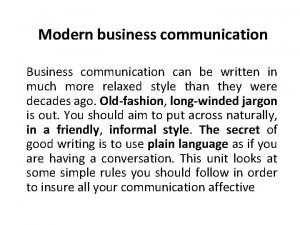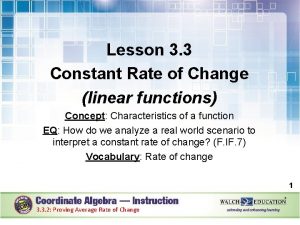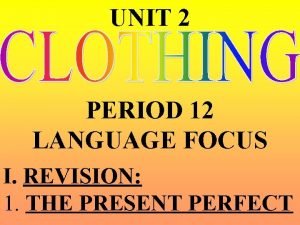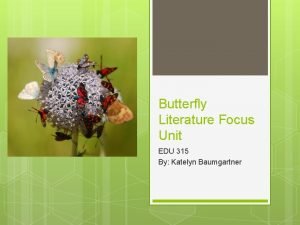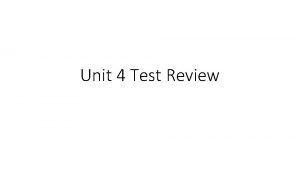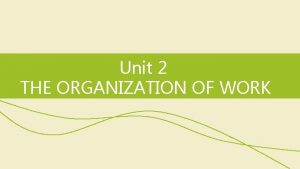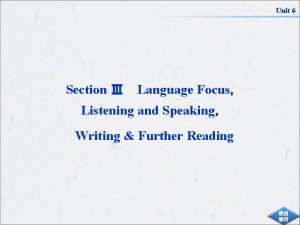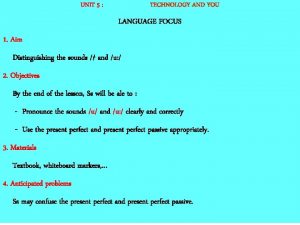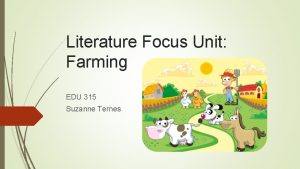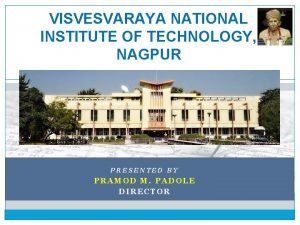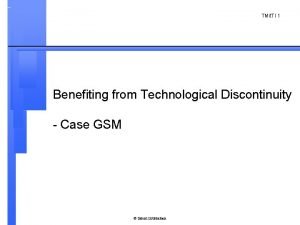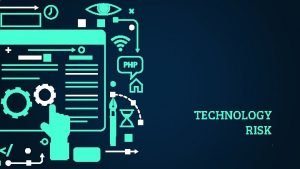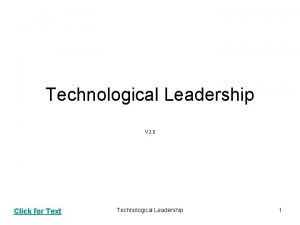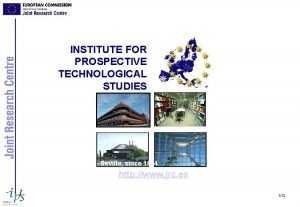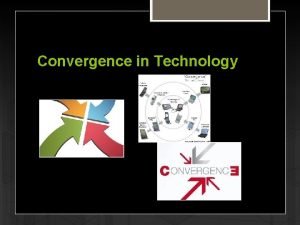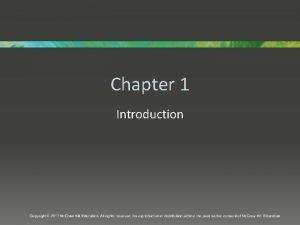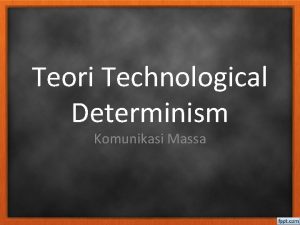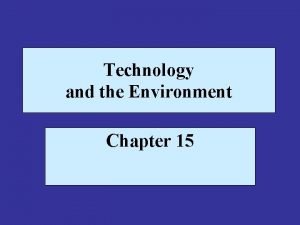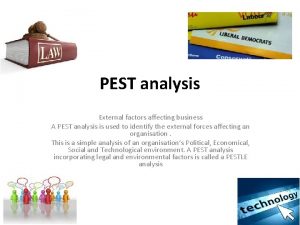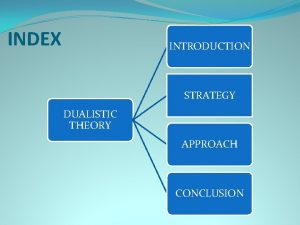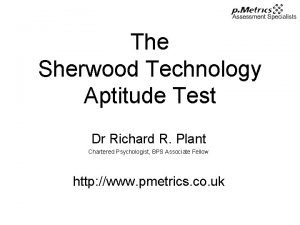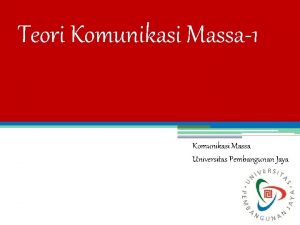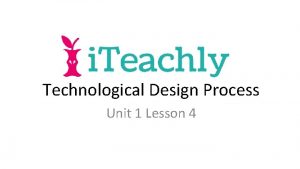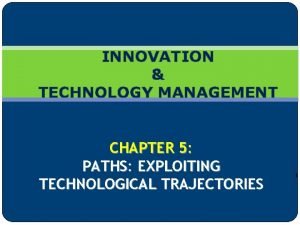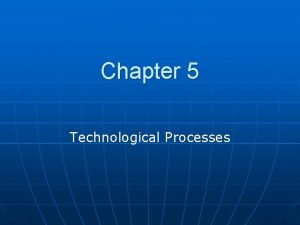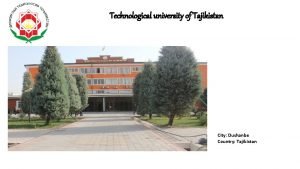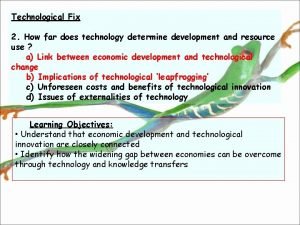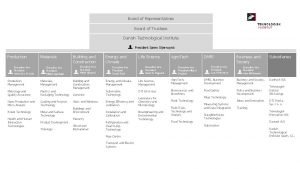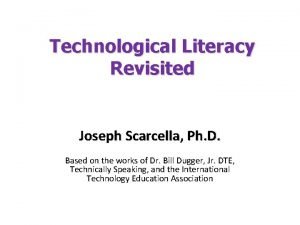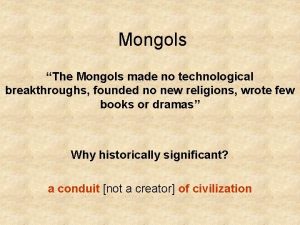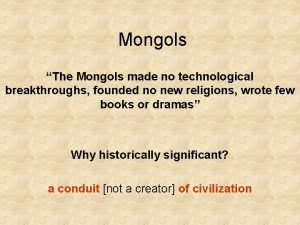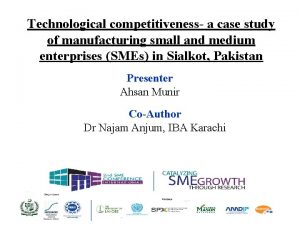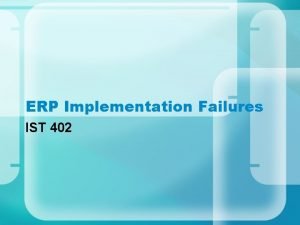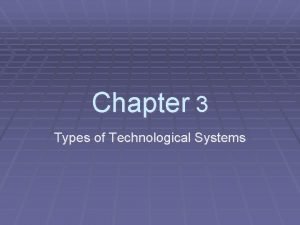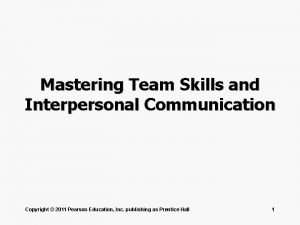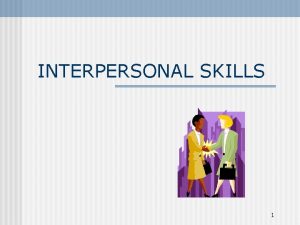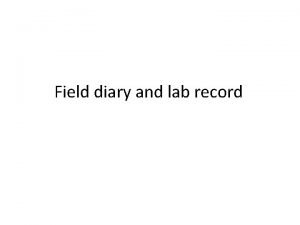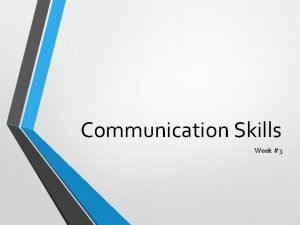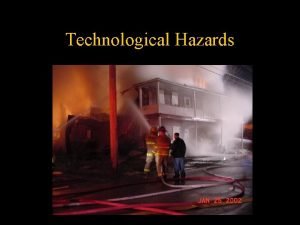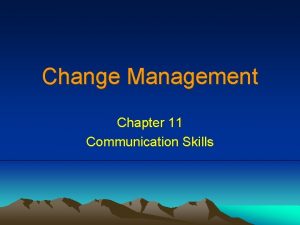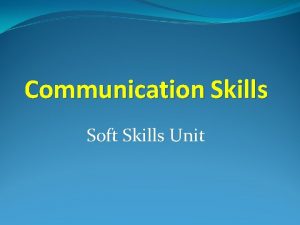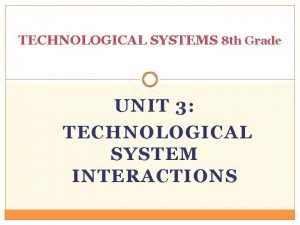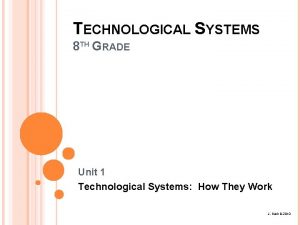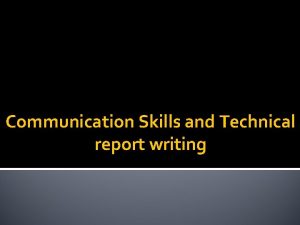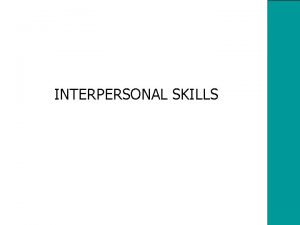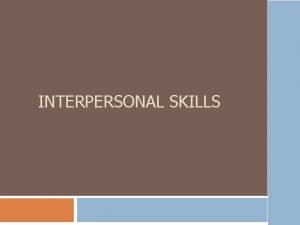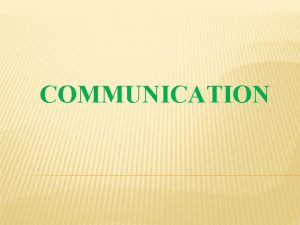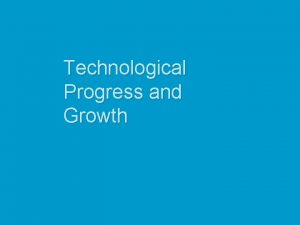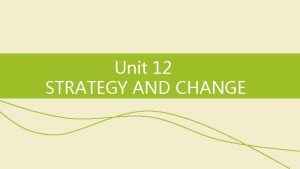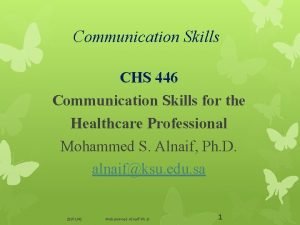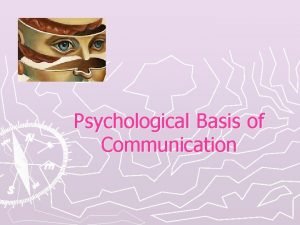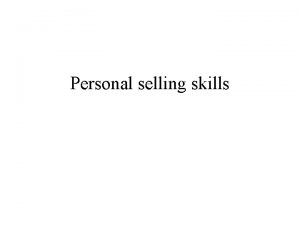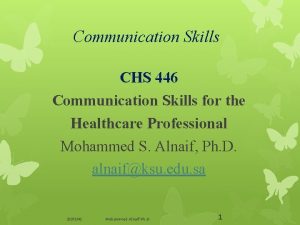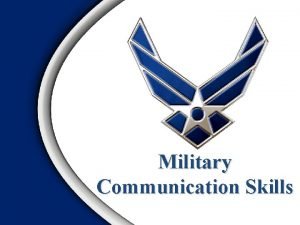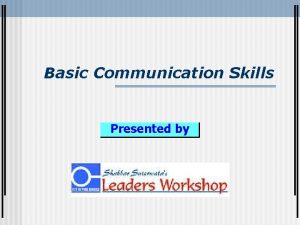Unit 12 Communication and Technological Change Skills focus






































































- Slides: 70

Unit 12 Communication and Technological Change

Skills focus Reading • understanding how ideas in a text are linked Writing • deciding whether to use a direct quotation or a paraphrase • incorporating quotations • writing research reports • writing effective introductions/conclusions Vocabulary focus • verbs used to introduce ideas from other sources (X contends/suggests/asserts that …) • • linking words/phrases conveying contrast (whereas), result (consequently), reasons (due to), etc. words for quantities (a significant minority)

12. 1 Vocabulary 12. 2 Reading 12. 3 Extending skills 12. 4 Extending skills

12. 1 Vocabulary A Study the words and phrases in box a. 1 How does each word or phrase relate to communication in public relations? 2 Check the stress and pronunciation.

12. 1 Vocabulary A Study the words and phrases in box a. Word/phrase PR/IT meaning asy'mmetrical one-way, one-directional 'blog abbreviation for weblog; an online diary or journal 'burnout overload 'channel the method of communication (e. g. , organizational, editorial, marketing, or web) de'code discover the meaning dissemi'nation give out news, information, ideas en'code represent complicated information simply inte'ractive involves the exchange of information between computer and user

12. 1 Vocabulary A Study the words and phrases in box a. Word/phrase PR/IT meaning 'media release a media (press) release is an official statement (announcement) given to media outlets, designed to communicate important issues to the public or the trade press 'microblogging a microblog entry can consist of short messages, an image or embedded video. Leading social networking websites Facebook, My. Space, Linked. In and Twitter have their own microblogging feature (or status updates) 'podcast radio broadcast which can be downloaded from the Internet 'pitching to try to persuade someone to do or buy something

12. 1 Vocabulary A Study the words and phrases in box a. Word/phrase PR/IT meaning re'ceiver equipment/person that changes signals into messages social 'media for social interaction using web technologies 'static HTML web content that does not change before being displayed in a browser 'wiki website allowing users to add, change and edit contents

12. 1 Vocabulary 1 B Read text A on the opposite page. What is a SWOT analysis? Part of a strategic planning process which enables a company to evaluate and analyze its Strengths, Weaknesses, Opportunities and Threats. 2. Look at the highlighted words. Connect each word to the noun it refers to. Example: it refers to a previously mentioned compound noun (SWOT analysis)

12. 1 Vocabulary B Read text A on the opposite page.

12. 1 Vocabulary B Read text A on the opposite page.

12. 1 Vocabulary B Read text A on the opposite page. Word Refers to Comments the + noun a previously mentioned noun one of several ways in which choice of article is governed it, they a noun generally refers to the nearest suitable noun previously mentioned or the subject of the previous sentence its, their a previously mentioned noun, indicating possession other possessive pronouns used in text for reference: his, hers, theirs, etc. this an idea in a phrase or a sentence • often found at the beginning of a sentence or a paragraph; a common mistake is to use it for this purpose • also used with prepositions (e. g. , for this)

12. 1 Vocabulary B Read text A on the opposite page. Word Refers to Comments this/these + a previously mentioned noun/noun phrase also used with prepositions a previously mentioned plural noun/noun phrase • also used with prepositions • in this text, ‘those of the traditional media’ means ‘the opportunities and threats of the traditional media’; there is no need to repeat ‘opportunities and threats’. Those of + noun is a useful construction to learn • those − not these − is used to show distance between the writer/speaker and the objects/concepts themselves noun those such + plural a previously noun mentioned noun meaning is: ‘Xs like this’ (e. g. , such audits). Note that when referring to a singular noun, such a X is used (e. g. , through such a strategic analysis)

12. 1 Vocabulary C Study the verbs in box b. They can be used to introduce quotations or paraphrases/summaries. 3 • accept, agree, concede • argue, Check the meanings of any words you don’tassert, know. claim, contend, insist • consider, note, observe, point out, state Which verbs have similar meanings? • disagree, dispute Which verbs are not followed by that ? • illustrate, indicate, show 4 When can you use each verb? 1 2 Example: accept = the writer (reluctantly) thinks this idea from someone else is true See Vocabulary bank.

Vocabulary bank Introductory verbs Choosing the right introductory verb is important. Your choice of introductory verb shows what kind of statement the writer is making. Seltzer (2006) emphasizes that the nature of the relationship between the parties involved in the communication experience “rests on shared meaning” (p. 13). Your choice of introductory verb also shows what you think of another writer’s ideas. This is an important part of academic work. Example: However, as Stamm and Grunig (1997) point out, although people receive and understand a message, they may still not change or act in accordance with the information.

Vocabulary bank Verb The writer… agree thinks this idea from someone else is true accept, concede reluctantly thinks this idea from someone else is true consider, emphasize, note, observe, point out, state, suggest* is giving his/her opinion argue, assert, claim, contend, insist is giving an opinion that others may not agree with cite is referring to someone else’s ideas disagree, dispute thinks an idea is wrong suggest* is giving his/her recommendation describe is giving a definition/description illustrate, indicate, show is explaining, possibly with an example report is giving research findings *suggest can have two meanings

Used when the writer … accept that (reluctantly) thinks this idea from someone else is true agree that thinks this idea from someone else is true argue that is giving an opinion that others may not agree with assert that is giving an opinion that others may not agree with cite + noun is referring to someone else’s ideas claim that is giving an opinion that others may not agree with concede that reluctantly thinks this idea from someone else is true consider that is giving his/her opinion contend that is giving an opinion that others may not agree with describe how; + noun is giving a description disagree that; with + noun thinks an idea is wrong dispute + noun thinks an idea is wrong

Used when the writer … emphasize that is giving his/her opinion strongly illustrate how; + noun is explaining, possibly with an example indicate that is explaining, possibly with an example insist that is giving an opinion that others may not agree with note that is giving his/her opinion observe that is giving his/her opinion point out that is giving his/her opinion contend that is giving an opinion that others may not agree with report that is giving research findings show that is explaining, possibly with an example state that is giving his/her opinion suggest that; + gerund is giving his/her opinion tentatively; or is giving his/her recommendation

12. 1 Vocabulary D Read text B on the opposite page. Look at the highlighted sentences. 1 What is the purpose of each sentence? Example: PR practitioners need to be aware of the issues, potential and pitfalls of social media = opinion or recommendation 2 In an assignment, should you refer to the highlighted sentences by quoting directly or paraphrasing? 3. Choose an appropriate introductory verb from box b and write out each sentence as a direct quotation or a paraphrase. Add the source reference. See Skills Bank

Skills bank Deciding when to quote and when to paraphrase When referring to sources, you will need to decide whether to quote directly or to paraphrase/summarize. l Quote when the writer’s words are special or show a particularly clever use of language. This is often the case with strongly stated definitions or opinions. l Paraphrase/summarize descriptions and factual information.

Original sentence The writer is … Direct quote or paraphrase? Suggested sentence a … PR practitioners must be aware of “the issues, potential and pitfalls of social media”. giving a strong opinion paraphrase with a direct quotation The CIPR Social Media Guidelines (2009) state that PR practitioners need to be aware of “the issues, potential and pitfalls of social media” (p. 1). b … PR practitioners should ensure that their material is relevant. giving an opinion or recommendation paraphrase The CIPR suggests that PR practitioners should only use relevant material. c Organizations and individuals who fail to disclose full commercial intent when utilizing social media networks “can find themselves criticised publicly”. making a strong statement paraphrase with a direct quotation The CIPR Social Media Guidelines (2009) notes that organizations and individuals using social media networks who fail to disclose full commercial intent “can find themselves criticised publicly” (p. 12).

Original sentence The writer is … Direct quote or paraphrase? Suggested sentence d Guidelines on blogging include: respecting copyright and the privacy of others … making a statement of fact paraphrase The CIPR Social Media Guidelines emphasize that blogging includes: respecting copyright and the privacy of others … e Practitioners are advised to abide by the CIPR Code of Conduct and relevant areas of UK law as “There areas – both legally and in terms of best practice – that are still applicable whether dealing online or offline. ” giving a recommendation quote directly The CIPR Social Media Guidelines (2009) contend that “There areas – both legally and in terms of best practice – that are still applicable whether dealing online or offline. ” (p. 2).

12. 1 Vocabulary E Look at the SWOT analysis of social media for public relations practice on page 106. 1 Complete the internal audit section with a list of strengths. 2 Suggest an action that the PR organization could take to overcome each of the identified weaknesses. 3 Write a list of opportunities for the external audit. 4 Suggest an action the PR organization could take to minimize each of the threats.

Internal audit (Page 106) Strengths • PR practitioners are communications strategists with expertise as communicators. • PR practitioners have training for developing specific audiences and delivering focused information. • PR practitioners have the expertise to optimize social media utilization. • PR practitioners have expertise in developing relationships with influencers and consumers. • PR agencies are constantly balancing different tasks, goals and priorities. • PR agencies have the ability to reach a huge volume of users in real time at minimum extra cost. • PR agencies have instant availability to global information. • PR agencies have an existing staff of technologically competent professional communicators. • PR practitioners have the ability to evaluate social media content quickly, i. e. , identify the significant from the insignificant. • PR practitioners should be able to utilize existing networks.

Internal audit (Page 106) Weaknesses 1 Inability to adapt to new realities. 2 Insufficient measurement of outcomes. 3 Weak planning for impact of unpredictable users. 4 Failure to optimize levels of service to clients. 5 Employees lack skills to properly advise clients. 6 Inability to monitor all sources of information. 7 Lack knowledge of the new social media tools. 8 High staff turnover due to new skill requirements. 9 Networked not hierarchical organizational structure required. 10 Practitioner burnout risk due to increased volume of content. 11 Move from one-directional to two-way commutations required.

External audit (Page 106) Opportunities • PR practitioners can gain increased influence and responsibility in guiding the overall corporate communication approach. • PR practitioners will become increasingly adept at planning for and responding rapidly to crises. • PR practitioners will develop better anticipatory and proactive responses to communities and stakeholders. • PR practitioners will build deeper relationships with the community and stakeholders. • PR practitioners will to get to know and work with other media people on a more social level. • PR agencies will step out from their historical behind-the-scenes role and become more visible. • More specialization as PR agencies identify and develop specific vertical (e. g. , healthcare) or demographic markets. • Enables the forming of relationships amongst globally dispersed communities of common interest.

External audit (Page 106) Threats 1 Inadequate monitoring and responding to mass of user-created content, including misinformation, etc. 2 Failure to create, monitor and nurture the relationships that might help clients because of time and cost constraints. 3 ROI (return on investment) of social media for clients difficult to measure and therefore to justify. 4 Volume of social media information causing client burnout. 5 Risk of reduced role for PR due to social media. c

12. 2 Reading A Discuss the following questions 1 What does written communication involve? Written communication involves the message, which must be prepared by the sender, being encoded into words and typographic characters. It is then transmitted on a printed page or some other channel (e. g. , a computer screen) and decoded by the receiver (assuming that the person understands that language and typographic characters). 2 What is the objective of a successful message? The receiver of the message must react to it (i. e. , act in accordance with the information to show that they have understood it).

12. 2 Reading B Survey the text on the opposite page. What will the text be about? Write three questions to which you would like answers. C Read the text. Does it answer your questions?

12. 2 Reading D Number the items on the right in order of publication or statement. 3 5 8 6 E For each paragraph: 1 Identify the topic sentence. 2 Think of a suitable title. 7 2 4

Topic sentence Paragraph title Para 1 Human communication is a complex process. The communication process Para 2 A number of factors impact on communication. Barriers to communication Para 3 Broom and Dozier’s (1990) co-orientation model of communications suggests that the closer the relationship on agreement and accuracy between the sender and receiver, the easier it is to communicate. Communication theories Para 4 Despite the fact that early communications models assumed the direction of communication was oneway (asymmetrical) … later theorists have argued that the receiver is not passive. Grunig’s two-way symmetrical model of public relations Para 5 In the late 1980 s, the development of the world Changes in communication wide web and the Internet resulted in radical changes in communication. Para 6 While these changes also present opportunities, they can create possible problems… Challenges from changes in communication

12. 2 Reading F Look at the underlined words in the text. What do they refer back to? Word Refers to it human communication this a new two-way symmetrical model of public relations which a channel these more personal, digital means of communicating that the receiver they changes they people it Web 3. 0 this noise it the communication medium

12. 2 Reading G Study the highlighted words and phrases. 1 What do they have in common? 2 What linking words or phrases can you use to show: ● addition? ● contrast? ● concession? ● result? ● reason? See Vocabulary Bank

Vocabulary bank Linking ideas in a text Linking words, which join ideas within a sentence or between sentences, convey different meanings: contrast Within sentences Between sentences but, whereas, while However, In/By contrast, On the other hand concession although, despite/in spite of the fact that However, At the same time, Nevertheless, Despite/In spite of + noun, Yet Result so, so that So, As a result, Consequently, Therefore Reason because, since, as Because of + noun, Owing to + noun, Due to + noun

12. 2 Reading G Study the highlighted words and phrases. Between-sentence linking words/phrases Within-sentence linking words/phrases Addition (and) … and … … too … also … … along with … … together with … Furthermore, … In addition, … Additionally, … Contrast (but) used when comparing However, In/By contrast, … On the other hand, … … but … … whereas … … while … Concession (but) used to concede/accept a point which simultaneously contrasts with the main point of a sentence or paragraph However, … At the same time … Nevertheless, … Despite/In spite of (this/noun), … Yet, … … although … … despite/in spite of the fact that. . .

12. 2 Reading G Study the highlighted words and phrases. Between-sentence linking words/phrases Within-sentence linking words/phrases Result (so) So, … As a result, … Consequently, … Therefore, … …, so … … so that … … with the result that … Reason (for) Because of (this/noun), … Owing to (this/noun), … Due to (this/noun), … … because … … since … … as … … due to/owing to the fact that …

12. 2 Reading G Study the highlighted words and phrases. 3 Write the sentences with the highlighted items again, using other linking words or phrases with similar meanings. But, as Stamm and Grunig (1977) point out, despite the fact that people receive and understand a message, they may still not change or act in accordance with the information. As a result, it can be argued, communication has not occurred. Therefore, to achieve better communication, public relations practitioners need to reduce noise. Although early communications models assumed that the direction of communication was one way (asymmetrical), from the sender to the receiver, later theorists have argued that the receiver is not passive.

12. 2 Reading G Study the highlighted words and phrases. Grunig developed a number of public relations communication models. Furthermore, in 2001, he presented a new two-way symmetrical model of public relations. In this model, he illustrated public relations as a continuum, with the organization and the publics placed in asymmetrical positions at either end, whereas “the middle of the continuum contains a symmetrical win-win zone”. Although these changes also present opportunities, they can create possible problems. . . It has been referred to … as the ‘semantic web’, due to the fact that it is a project aimed at designing web page data that computers understand. Because the communication medium constantly changes, it also challenges methods of communication, although the core components … remain the same.

12. 2 Reading H Read the text on the right. A student has taken some lecture notes, but the quotations and phrases have not been correctly done. Can you spot the mistakes and correct them?

Skills bank Incorporating quotations l Use an introductory verb. l Copy the original words exactly. l Don’t forget the quotation marks. l l Make the quote fit the grammar of the sentence. Add emphasis with italics and write '[emphasis added] ‘ l Add words which are not in the original but are necessary to fully understand the quotation out of context. Put the extra word(s) in brackets. l Show any missing words with '. . . '.

Skills bank Incorporating quotations Do not quote more than one sentence within the body of a paragraph. If you want to quote two or three sentences, put in a colon and write the quote as indented text, so that it clearly stands out from the body of your essay. However, think very carefully before you include a long quote. It is usually better to paraphrase in this case.

12. 2 Reading I Write a paragraph for a university lecturer, summarizing the ways PR practitioners can improve communication. Decide whether you should quote or paraphrase the material from the text. Communication occurs when the receiver of a message responds to it. For example, it has an impact on the receiver’s attitude or behaviour. Seltzer (2006: 13) argues that communication “rests on shared meaning”. That is, the more the views of the sender and receiver have in common, the easier it is to communicate. Internet communication is two-way. PR practitioners can therefore improve communication with Internet ‘publics’ by researching the appropriate keywords and phrases to attract their public, or relating to a particular market. This is a particularly important strategy for successful ‘niche’ marketing.

12. 2 Reading The Internet has become an important medium of communication, and an important approach in marketing. There has been a huge explosion of information available and a continually evolving Internet language as a result. Grunig (2001), in his two-way symmetrical model, argues that an organization and its public may be at opposite ends of a ‘continuum’. However, the closer they come to meeting in the middle, in a two-way “win-win zone” (ibid. ), the greater their prospects for engaging in “mixed motive communication” (p. 25). However, it is also important that for successful communication, particularly on the Internet where communication is two-way, that the response is timely and appropriate. c

12. 3 Extending skills A Study the words in box a. 1 Check the pronunciation and grammar. 2 What are their meanings in a research report?

Word Notes on pronunciation Meaning in a research report and grammar con 'duct v (noun is pronounced: 'conduct) do (some research, a survey, an experiment) 'data pl n information; can be numerical (quantitative) or verbal (qualitative) dis 'cussion n (U/C) The title of the section in a research report which discusses the findings; sometimes the discussion is included in the Findings/Results section. ' findings pl n The title of the section in a research report which details what has been found out: each finding should be linked with a research question; the title Results can also be used for this section. impli 'cation n(C) possible effect or result of the findings ' interview n(C), v noun: when someone is asked questions in a survey verb: to ask someone questions in a survey

Word Notes on pronunciation and grammar Meaning in a research report interview'ee n(C) the person being questioned ' interviewer n(C) the person asking the questions limi' tation n(C) A problem with the research methods: an aspect which the research could not address. ' method n(C) Title of the section in a research report which explains how the research was carried out; in the plural form, it refers to the research methods used question' naire n(C) a written set of questions ' random adj in no fixed order: with no organizing principle

Word Notes on Meaning in a research report pronunciation and grammar recommen' dation ' re search question n(C) suggestion for action as a result of the findings of the research n(C) what the researcher wants to find out re'spondent n(C) a person taking part in a questionnaire survey re'sults pl n same as Findings; used more or less interchangeably ' sample n(C), v noun: the group of people taking part in the research verb: to ask research questions to a selected group of people ' survey n(C), v noun: a type of research in which the researcher sets out to describe a situation or set of ideas or behaviours, by reading a variety of documents or asking people questions verb: conduct this type of research ' under take v do (some research, a survey)

12. 3 Extending skills B Read the two Method paragraphs on the right. 1 Copy them into your notebook. Put the verbs in brackets in the correct form. 2 Identify the original research questions, the research methods and other important information.

12. 3 Extending skills B Read the two Method paragraphs on the right. Method (A) Research questions Research method Other important information A survey (conduct) was conducted by the research firm Strategy. One to find out how the Internet (perceive) was perceived by political assistants as a resource for (connect) connecting with local residents and communities. Three hundred and ninety six senior staff members from key capitals in the US and Europe (interview) were interviewed. Approximately 34% of the sample (be) were UK Parliament staff, and 25% (be) were French Assembly staff. How useful do policymakers find the Internet for connecting with their local communities? survey 396 interviews of senior staff members across UK and Europe survey undertaken in September 2009 and released on November 4, 2009

12. 3 Extending skills B Read the two Method paragraphs on the right. Method (B) Research questions Research method Other important information In order to find out whether multiple repetitions of information about a particular company enhances its credibility, a 30 -minute telephone survey (undertake) was undertaken of 4 475 people in 20 countries between November 5 and December 14, 2008. Two different age groups (investigate) were investigated, including 1 075 people aged 25 to 34, and 3 400 people aged 35 to 64. In general, how many times do people need to hear something about a specific company to believe that the information is likely to be true? 30 -minute telephone survey total of 4 475 people in 20 countries surveyed between November 5 and December 14, 2008 1 075 people aged 25 to 34, and 3, 400 people aged 35 to 64

12. 3 Extending skills C What are the sections of a research report? What order should they go in? See Skills Bank

Skills bank Structuring a research report A research report is an account of some research which has been undertaken to find out about a situation or a phenomenon, e. g. , What do our customers think of our services? What social media do public relations companies use? l Introduction introduce the topic; background information; reasons for research l Methods research questions; how research was carried out l Findings/results answers to research questions l Discussion issues arising from findings; limitations of research l Conclusion summary of main findings; implications; recommendations; possibilities for future research

12. 3 Extending skills Section C What are the sections of a research report? What order should they go in? Order in a research report Introduction 1 Method 2 Findings/Results 3 Discussion 4 Conclusion 5

12. 3 Extending skills D Read the Introduction and Conclusion to Report A on the opposite page.

12. 3 Extending skills D Read the Introduction and Conclusion to Report A on the opposite page. 1 Why was the report undertaken? 2 What action(s) does the report recommend? 3 What are the elements of a good introduction and conclusion? See Skills Bank

Skills bank Writing introductions and conclusions Introduction l Introduce the topic of the report. l Say why the topic is important. l Give background information. l Give an outline of the report plan. Note: No substantial information; this belongs in the body of the report. Conclusion l Summarize the main points in the report without repeating unnecessarily. l Make some concluding comments such as likely implications or recommendations. Note: No new information; all the main points should be in the body of the report.

12. 3 Extending skills 1 D Read the Introduction and Conclusion to Report A on the opposite page. Why was the report undertaken? To discover policymakers’ perceptions of the Internet as a tool for connecting with local communities. 2 What action(s) does the report recommend? Staff should make better use of social media tools to connect more effectively with the local community.

12. 3 Extending skills 3 D Read the Introduction and Conclusion to Report A on the opposite page. What are the elements of a good introduction and conclusion? Good introduction Example sentences Introduce the topic. Give some background information. The global use of social media networks by corporations and organizations is increasing. It is argued that online resources and social media networks are replacing traditional media. Say why the topic is important. It is important to determine the perceived value of the Internet as a tool for policymakers internationally. Say what you will do in the report. Give a general statement of the purpose of the research. This report will describe a survey undertaken to find out policymakers’ perceptions of the Internet as a tool for connecting with local residents and communities. It will assess the extent of the role which online sources play in informing and shaping the behaviour of staff in key policy positions.

Good conclusion Example sentences Give a general summary/restatement of findings. To conclude, the survey identified the growing importance of digital tools for both communicating with constituents and for constituents reaching their members. Staff are turning to social networks, blogs and microblogs more regularly. However, staff use of online communication channels for personal use far exceeded their use for policy roles. Say what your recommendations are. Staff need to make better use of the social media tools they are currently using. For example, training and other means of raising awareness are needed to improve effective usage. Set out the implications of not taking action. If usage continues to be low, or primarily for personal use rather than for work purposes, then the organizations are not succeeding in their aim of connecting with the local community. Comment on future possibilities if action is taken. Many dedicated online sources for policy framing are beginning to emerge. The influence of social media networks is increasing and cannot be overlooked. These need to be included in the mix of tools for communicating about and forming consensus on important policy issues. The better the information is targeted, the better the chances of it being read. c

12. 4 Extending skills A Describe the data in Figures 1 and 2 from the report.

12. 4 Extending skills The communication methods respondents used for reaching members included a mixture of traditional and digital communication channels. The traditional written letter was marginally the most popular for their communication (22%), followed by e-mails, telephone calls and one-on-one meetings (all 21%). Microblogging and members’ social networks were the least favoured methods (2% and 5% respectively). It was interesting to note that traditional channels were three of the four most popular means of communication. Overall, traditional channels far exceeded digital channels as communication methods for reaching members. Figure 1

12. 4 Extending skills A large majority of respondents saw traditional communication channels as having the greatest effect in reaching their constituents. Of these channels, an overwhelming majority (95%) perceived one-on-one meetings as most effective, followed by television appearances and speaking events (both over 90%). Newspaper columns and radio appearances were also rated highly by respondents (85%). Of the paid media communication channels, television and print advertising had the greatest effect with a significant 62%, while only a third of respondents cited online advertising as being effective. Figure 2

12. 4 Extending skills The most effective method of digital communication was perceived to be websites, cited by a large majority (over 80%) of the respondents. Other methods seen as effective digital communication included online videos by over half of the respondents (51%) and blogging (46%). The least effective channel of digital communication was microblogging, with a minority rating of just over 20%. Figure 2

12. 4 Extending skills B Look at the first paragraph from the Findings section of the report. 1 Complete the spaces with quantity phrases. Put the verbs in the correct tense. See Vocabulary Bank majority had used had heard minority majority saw

Vocabulary bank Referring to quantities and group sizes in a report majority A/An overwhelming/large/significant slight /small/insignificant/tiny minority number Over More Less than half a quarter a third x% (of +noun)

12. 4 Extending skills 2 B Look at the first paragraph from the Findings section of the report. Write another paragraph, using Figure 2. The role of online resources and social media networks in setting policy and communicating with constituents was significantly underutilized by senior parliamentary staff. Traditional channels of communication (with the exception of websites), including one-on-one meetings, television appearances and speaking events, were viewed by respondents as the most effective channels for connecting with constituents. This was followed by other forms of traditional communications, including television, speaking engagements, newspaper columns and radio appearances. Paid media was not perceived to be highly effective, and in the field of digital communications, blogging was perceived to be the least useful of all communication channels; websites, however, were used by over 80% of the respondents.

12. 4 Extending skills C Look at the notes for the Discussion part of the report on the opposite page. Write the discussion paragraph.

12. 4 Extending skills Discussion The study showed that staff use of traditional and Internet communication was mixed. However, a significant 60% of the staff used the Internet for personal use, while 96% of the staff used the Internet for social policy research. Despite high levels of Internet awareness, the use of the Internet by senior staff for communicating with professional colleagues and constituents across political capitals was very limited, 28% and 21% respectively. This very low use for professional communication indicates that senior staff need to improve their communication effectiveness. Digital media use will continue to increase, along with online advice and digital conferences. Politicians and their staff need to increase their use of digital tools. A possible limitation of the survey’s focus on senior staff may be that these results reflect a demographic group for whom using the medium of digital communications for professional purposes is still a learning curve.

12. 4 Extending skills D Cover the Conclusion section on the opposite page. 1 What should the report writer say in the Conclusion? Make some notes. 2 Read the Conclusion again and compare.

Tips for Reference 12. 1 Vocabulary部分,先让学生课前通过查阅词典等完成A、B、C项练习,课堂上 结合Vocabulary bank中“Introductory verbs”进行讲解;结合Skills Bank中“Deciding when to quote and when to paraphrase”的介绍,完成D项练习;要求学生课后完成 E项练习,课内进行讨论。 12. 2 Reading部分,学生通过分组讨论的形式完成A项练习,随后依次完成B-F项练 习;结合Vocabulary bank中“Linking ideas in a text”,完成G项练习;通过Skills Bank中“Incorporating quotations”讲解,帮助学生完成H项练习;I项练习可作为课 后任务 。 12. 3 Extending skills部分,A-C项练习可由学生课前完成,课堂重点讲解Skills Bank中“Structuring a research report”、“Writing introductions and conclusions”, 并完成D项练习; 12. 4 Extending skills部分,作为学生课后任务,课堂上结合Vocabulary bank中 “Referring to quantities and group sizes in a report”,重点讲解描述图表 ;。

 Module 7 basic communication skills review questions
Module 7 basic communication skills review questions Porter's generic business strategies
Porter's generic business strategies Two fundamental business strategies are
Two fundamental business strategies are Five things we need to know about technological change
Five things we need to know about technological change For adult
For adult Actor focus vs object focus
Actor focus vs object focus Communication and employability
Communication and employability Unit 1 employability skills
Unit 1 employability skills Unit 1 communication and employability skills for it
Unit 1 communication and employability skills for it Technological gap and product cycle model
Technological gap and product cycle model Scientific vs technical
Scientific vs technical Intrapersonal and interpersonal skills
Intrapersonal and interpersonal skills What are hard skills and soft skills
What are hard skills and soft skills Modern business letters are usually written in
Modern business letters are usually written in Example of constant rate of change
Example of constant rate of change Lesson 6 language focus
Lesson 6 language focus Unit 2 lớp 12 language focus
Unit 2 lớp 12 language focus Literature focus unit example
Literature focus unit example Focus 2 test unit 4
Focus 2 test unit 4 Focus 3 unit 2
Focus 3 unit 2 Language focus unit 6
Language focus unit 6 Unit 5 technology and you
Unit 5 technology and you What is a literature focus unit
What is a literature focus unit Literature focus unit
Literature focus unit Unit 6 review questions
Unit 6 review questions Chemical changes examples
Chemical changes examples Absolute change and relative change formula
Absolute change and relative change formula Differences between chemical and physical changes
Differences between chemical and physical changes Change in supply and change in quantity supplied
Change in supply and change in quantity supplied What is example of physical change
What is example of physical change Rocks change due to temperature and pressure change
Rocks change due to temperature and pressure change Whats the difference between physical and chemical change
Whats the difference between physical and chemical change First order change
First order change Visvesvaraya technological university nagpur
Visvesvaraya technological university nagpur Technological discontinuity definition
Technological discontinuity definition Technological risk definition
Technological risk definition What is technological modelling
What is technological modelling Technological leader
Technological leader The technological design model is presented as a
The technological design model is presented as a Pest political economic social technological
Pest political economic social technological Institute for prospective technological studies
Institute for prospective technological studies Convergence technology definition
Convergence technology definition Importance of technological innovation
Importance of technological innovation Economic environment factors
Economic environment factors Teori technological determinism
Teori technological determinism Technological dualism
Technological dualism Pest analysis of tesco
Pest analysis of tesco Technology forecast
Technology forecast Technological dualism
Technological dualism Pama technological support
Pama technological support Ufa colleges and universities
Ufa colleges and universities Technological aptitude test
Technological aptitude test Contoh spiral of silence dalam kehidupan sehari-hari
Contoh spiral of silence dalam kehidupan sehari-hari Which is one limitation to technological design
Which is one limitation to technological design 5 major technological trajectories
5 major technological trajectories 5 technological processes
5 technological processes Kitchen design
Kitchen design Technological university of tajikistan
Technological university of tajikistan Technological fix definition
Technological fix definition Latvian technological center
Latvian technological center Danish technological university
Danish technological university Technological literacy definition
Technological literacy definition The mongols made no technological breakthroughs
The mongols made no technological breakthroughs The mongols made no technological breakthroughs
The mongols made no technological breakthroughs Technological competitiveness
Technological competitiveness Ist 402
Ist 402 Types of technological systems
Types of technological systems Ontario skills passport
Ontario skills passport Mastering team skills and interpersonal communication
Mastering team skills and interpersonal communication Pengertian interpersonal skill
Pengertian interpersonal skill Importance of field diary ppt
Importance of field diary ppt
